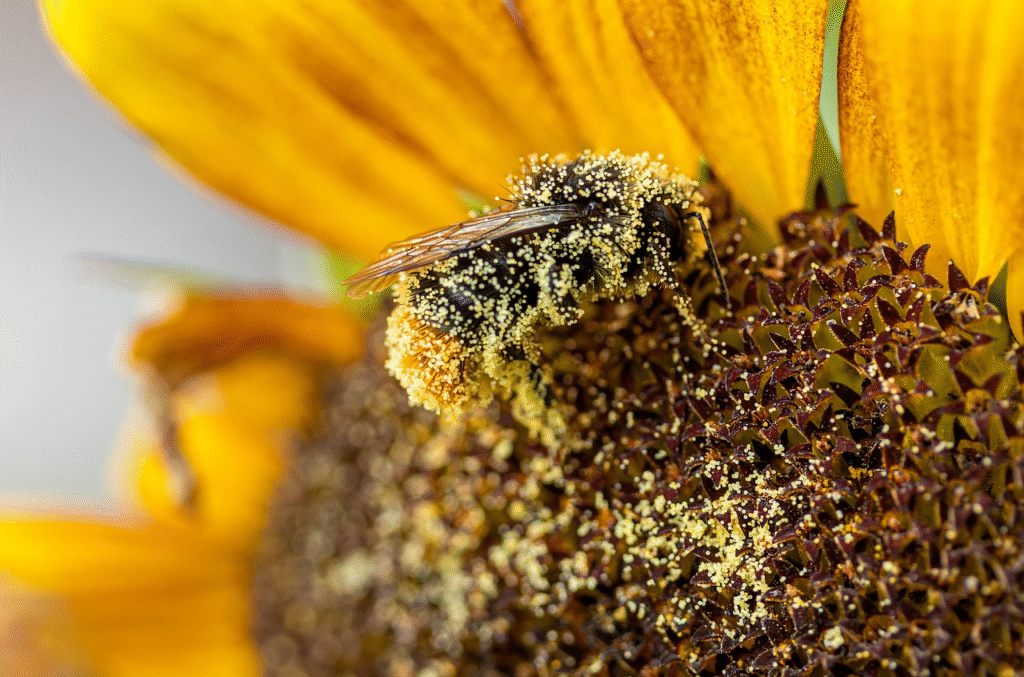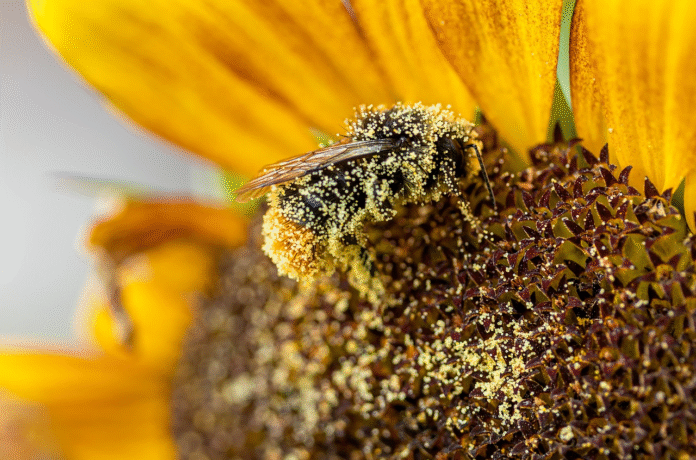
Seasonal allergies are a familiar nuisance for millions of people each year. While pollen is the typical culprit behind sneezing, itchy eyes, and congestion, it’s not the only factor contributing to the growing intensity of allergy season. In fact, it’s the intersection of allergens and air pollution that’s making life even harder for those with allergies, especially in urban environments where the risks are compounded by a range of other environmental issues.
As air pollution from sources like car emissions, industrial waste, and wildfires continues to escalate, allergy sufferers find themselves facing a more potent combination of irritants. These pollutants don’t just cause breathing problems on their own—they can make existing allergens like pollen more aggressive and trigger even more severe symptoms. The warming climate is also playing a critical role in amplifying these effects, making it more difficult for people to find relief.
The Perfect Storm: Pollution and Allergies Collide
Air pollution from ozone, particulate matter, sulfur, and nitrogen compounds can independently cause a variety of breathing issues, including asthma and chronic respiratory conditions. But when combined with pollen, it creates a “perfect storm” of respiratory distress. Pollen, which is already a highly effective trigger for allergic reactions, can become even more potent when mixed with pollutants in the air. In cities, where pollution levels are already high, the situation becomes even more problematic.
For example, road pollution from traffic exhaust can exacerbate the effects of pollen, making it easier for the allergens to penetrate deep into the respiratory system. This means that even if you’re avoiding the outdoors or staying indoors with the windows closed, the pollution still gets in. To make matters worse, areas with higher air pollution levels tend to warm up faster than rural regions, contributing to even worse air quality and longer, more intense allergy seasons.
And it’s not just urban areas that are suffering. Cities with high levels of pollution, especially those that are densely populated or located in areas with warmer climates, can experience pollen seasons that stretch longer and overlap with other allergenic events. This pattern is particularly concerning in low-income and underserved communities, where access to air filtration systems and allergy treatments may be limited.
The Role of Climate Change in Expanding the Allergy Landscape
While pollen is a primary offender, climate change is amplifying its impact. Warmer temperatures and unpredictable precipitation patterns are leading to extended growing seasons for many plants that produce pollen. Trees, grasses, and weeds—typically the main sources of allergens—are now releasing pollen earlier in the spring and holding onto it longer into the summer and fall.
In addition to changes in pollen production, climate change is also creating the ideal conditions for mold to thrive. In areas that experience heavy rainfall or severe storms, mold can grow inside homes and buildings, especially in places with roof damage or leaky windows. For example, in New Orleans, the aftermath of storms like Hurricane Francine created the perfect environment for mold to proliferate. High humidity and warmth, combined with moisture from storm damage, meant that mold grew rapidly inside homes, triggering respiratory issues and further aggravating allergies.
“When storms come through, they wreak havoc, causing roof leaks and flooding,” said John Carlson, head of the high-risk allergy division at the Ochsner Health System in New Orleans. “Some people are able to make quick repairs, but others live in homes with persistent moisture problems, which lead to year-round mold growth. The combination of heat and humidity makes the situation even worse.”
Furthermore, extreme weather events like storms and high winds can stir up dust and debris, which is another asthma trigger. A phenomenon known as “thunderstorm asthma” can occur when storms rupture pollen grains into smaller, more allergenic fragments, causing asthma attacks in people who might otherwise have been unaffected.
More Than Just Seasonal Allergies
It’s not entirely clear whether the number of people affected by seasonal allergies is steadily increasing, but there’s no doubt that more people are experiencing allergy-like symptoms, even if they don’t have a formal diagnosis. According to Carlson, in places like New Orleans, oak pollen is so pervasive that even individuals without an oak allergy can experience symptoms such as itchy eyes and sneezing from the sheer irritant effect of the particles in the air.
These symptoms can be triggered not only by traditional allergens like pollen and mold, but also by a host of environmental factors that combine in ways we didn’t expect. In fact, the interaction between various pollutants and allergens may be contributing to a rise in overall respiratory distress, affecting people who have never experienced allergies before.
Managing Allergies in a Changing World
While there’s no quick fix for the worsening allergy crisis, there are ways to manage the worst effects. For people who already suffer from seasonal allergies, seeing an allergist is essential. Knowing which specific allergens are affecting you, and which treatments work best for your body, can make all the difference. It may also be helpful to start medications, like nasal sprays or over-the-counter antihistamines, before allergy season hits. This gives the body time to adjust and reduce symptoms once pollen counts rise.
“We generally recommend starting allergy medication about two weeks before pollen season picks up,” said Kenneth Mendez, CEO of the Asthma and Allergy Foundation of America. “That gives the medication time to build up and provide maximum effectiveness.”
For people who aren’t sure if they have allergies but are noticing symptoms, paying attention to when symptoms flare up—whether during pollen season or after storms—can help pinpoint the triggers. If symptoms persist, consulting with an allergist can provide clarity and relief.
In addition to medication, there are several lifestyle changes that can help limit exposure to allergens. Keeping windows closed, especially during peak pollen times, can keep allergens out of the house. It’s also a good idea to wash clothing and wipe down pets after they’ve been outside to remove any pollen that may have clung to them.
Long-Term Solutions: Tackling Climate Change and Pollution
The most effective way to reduce the long-term impact of allergies is to address the root cause: climate change. Reducing emissions of heat-trapping gases, transitioning to renewable energy sources, and implementing policies that curb air pollution are critical steps in alleviating allergy symptoms for future generations.
But for now, we can’t ignore the reality of the worsening allergy season. In this new era of climate change, it’s more important than ever to stay prepared, be mindful of environmental factors, and seek medical advice when needed. And while the tissues and allergy medications may offer some relief, it’s clear that the fight against allergies will require more than just a few sneezes to overcome.


